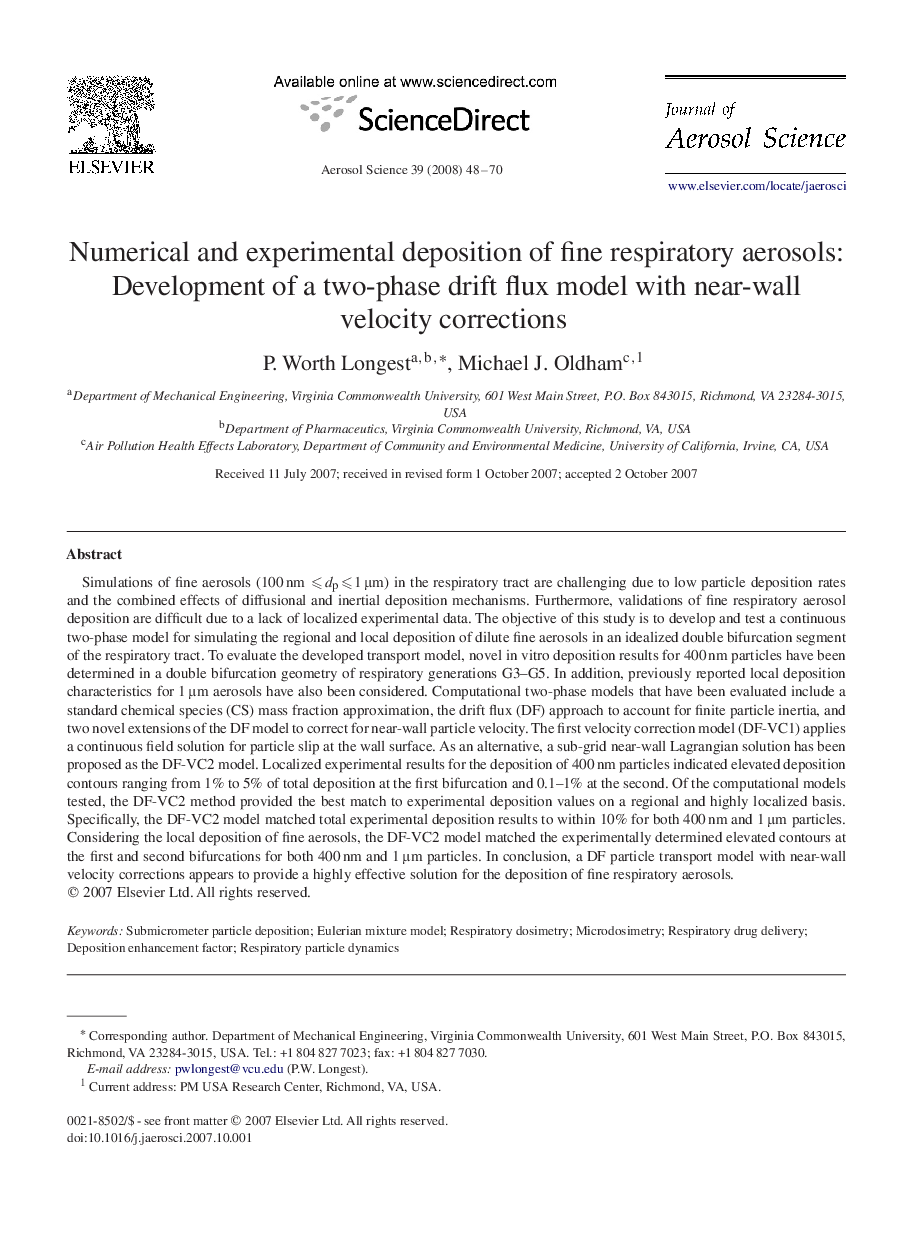| Article ID | Journal | Published Year | Pages | File Type |
|---|---|---|---|---|
| 4453148 | Journal of Aerosol Science | 2008 | 23 Pages |
Simulations of fine aerosols (100 nm ⩽dp⩽1μm) in the respiratory tract are challenging due to low particle deposition rates and the combined effects of diffusional and inertial deposition mechanisms. Furthermore, validations of fine respiratory aerosol deposition are difficult due to a lack of localized experimental data. The objective of this study is to develop and test a continuous two-phase model for simulating the regional and local deposition of dilute fine aerosols in an idealized double bifurcation segment of the respiratory tract. To evaluate the developed transport model, novel in vitro deposition results for 400 nm particles have been determined in a double bifurcation geometry of respiratory generations G3–G5. In addition, previously reported local deposition characteristics for 1μm aerosols have also been considered. Computational two-phase models that have been evaluated include a standard chemical species (CS) mass fraction approximation, the drift flux (DF) approach to account for finite particle inertia, and two novel extensions of the DF model to correct for near-wall particle velocity. The first velocity correction model (DF-VC1) applies a continuous field solution for particle slip at the wall surface. As an alternative, a sub-grid near-wall Lagrangian solution has been proposed as the DF-VC2 model. Localized experimental results for the deposition of 400 nm particles indicated elevated deposition contours ranging from 1% to 5% of total deposition at the first bifurcation and 0.1–1% at the second. Of the computational models tested, the DF-VC2 method provided the best match to experimental deposition values on a regional and highly localized basis. Specifically, the DF-VC2 model matched total experimental deposition results to within 10% for both 400 nm and 1μm particles. Considering the local deposition of fine aerosols, the DF-VC2 model matched the experimentally determined elevated contours at the first and second bifurcations for both 400 nm and 1μm particles. In conclusion, a DF particle transport model with near-wall velocity corrections appears to provide a highly effective solution for the deposition of fine respiratory aerosols.
